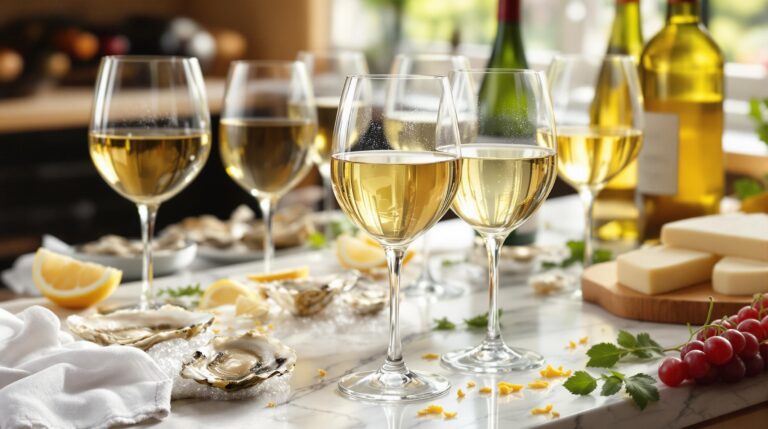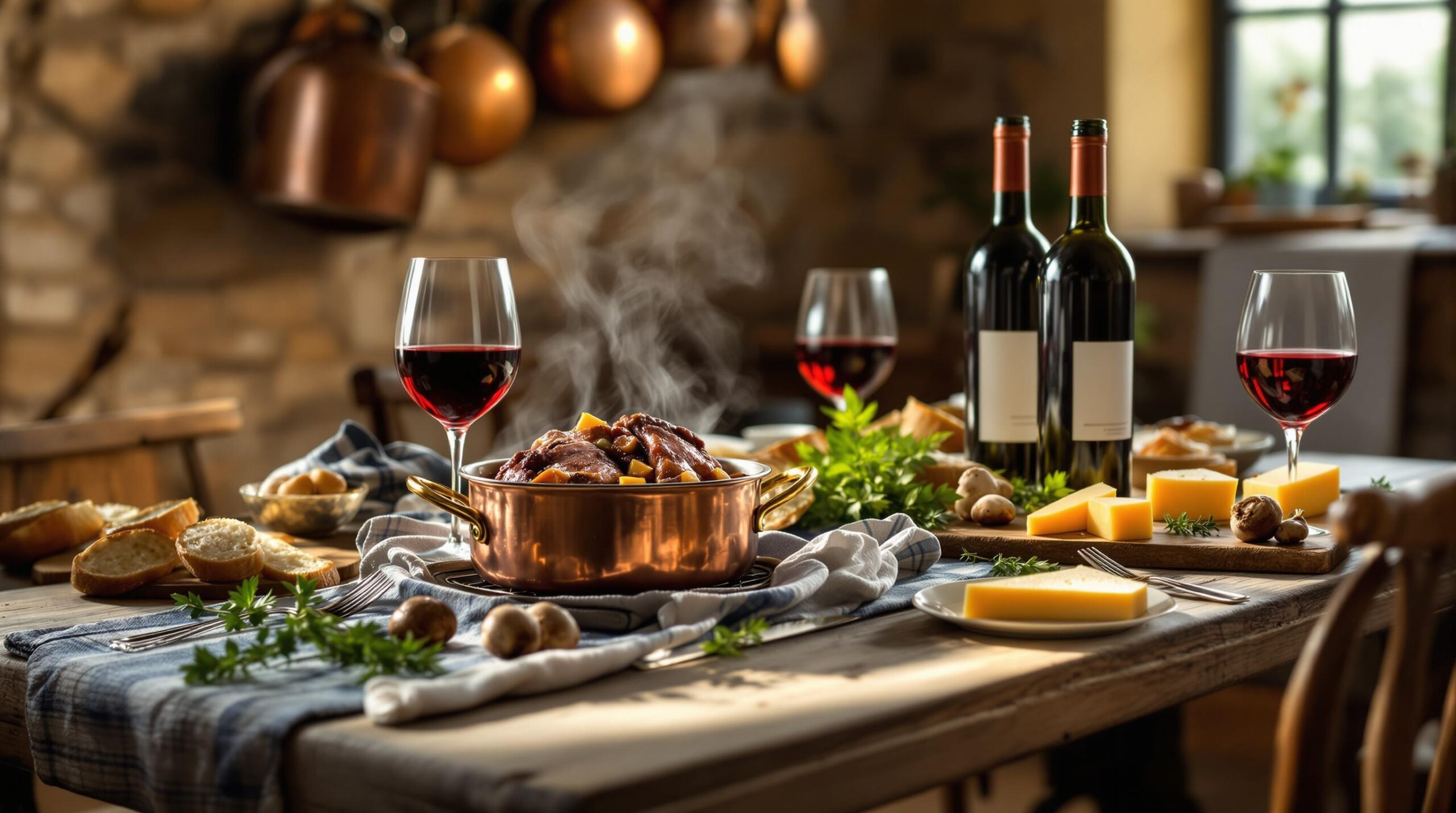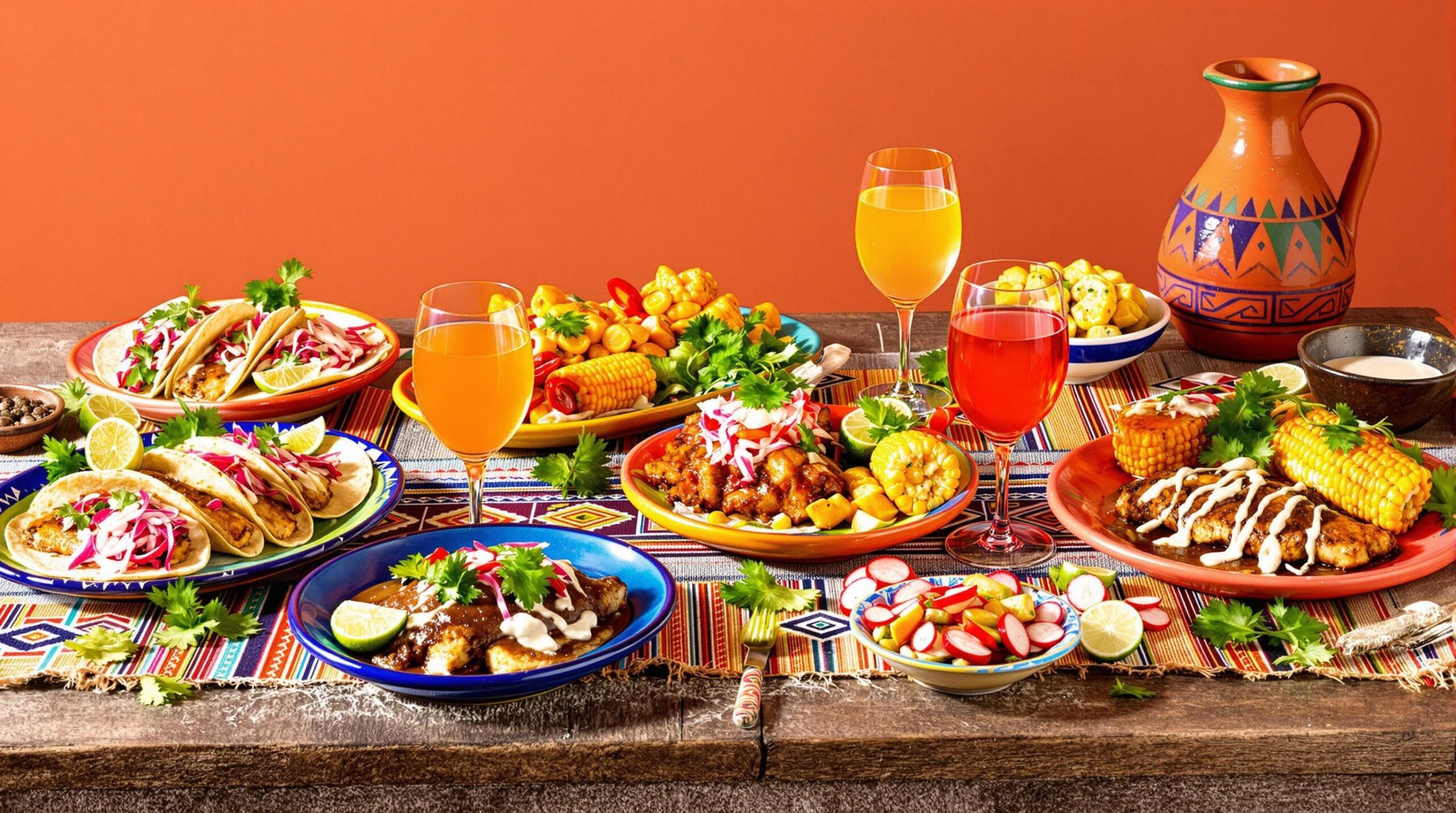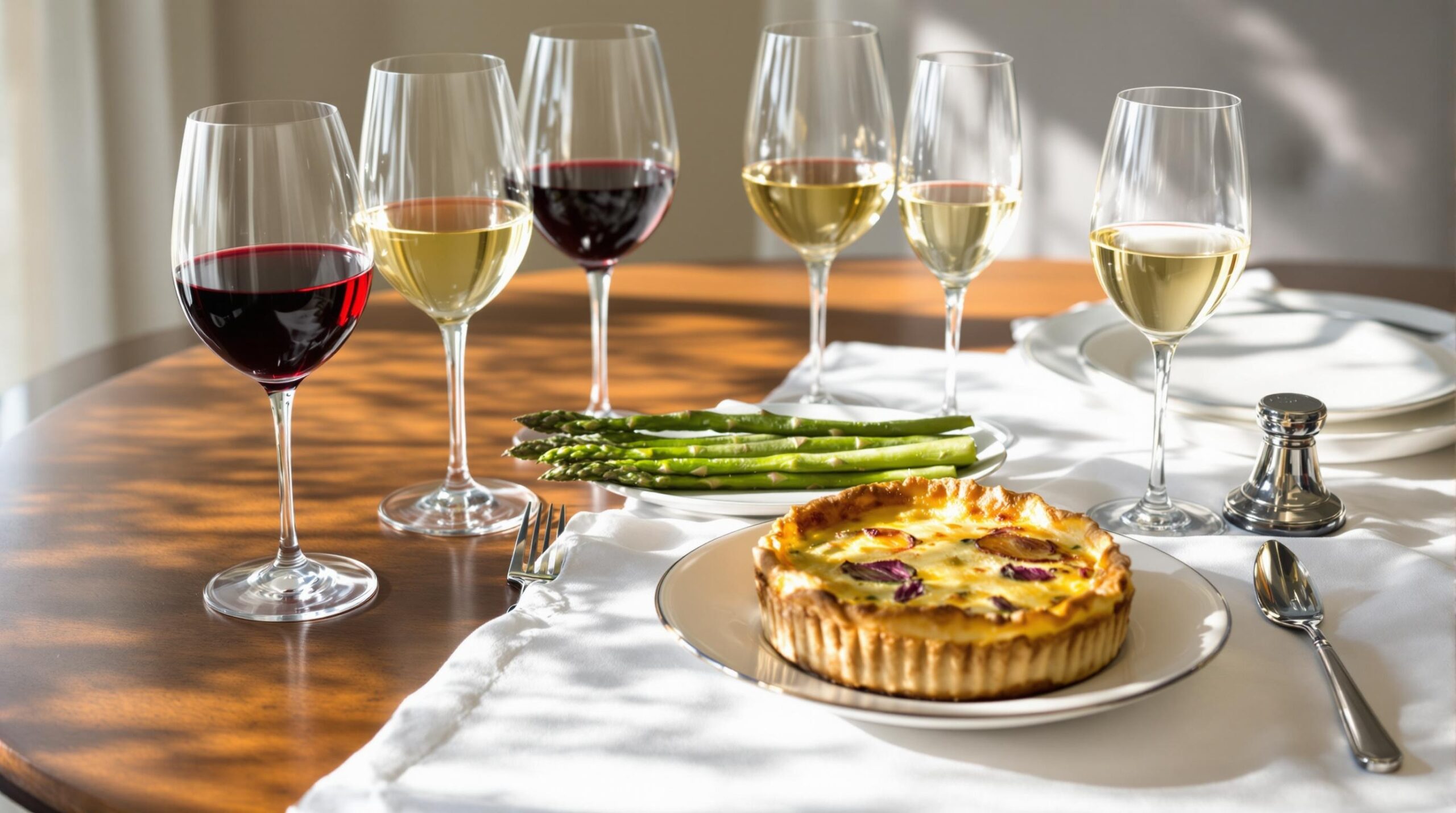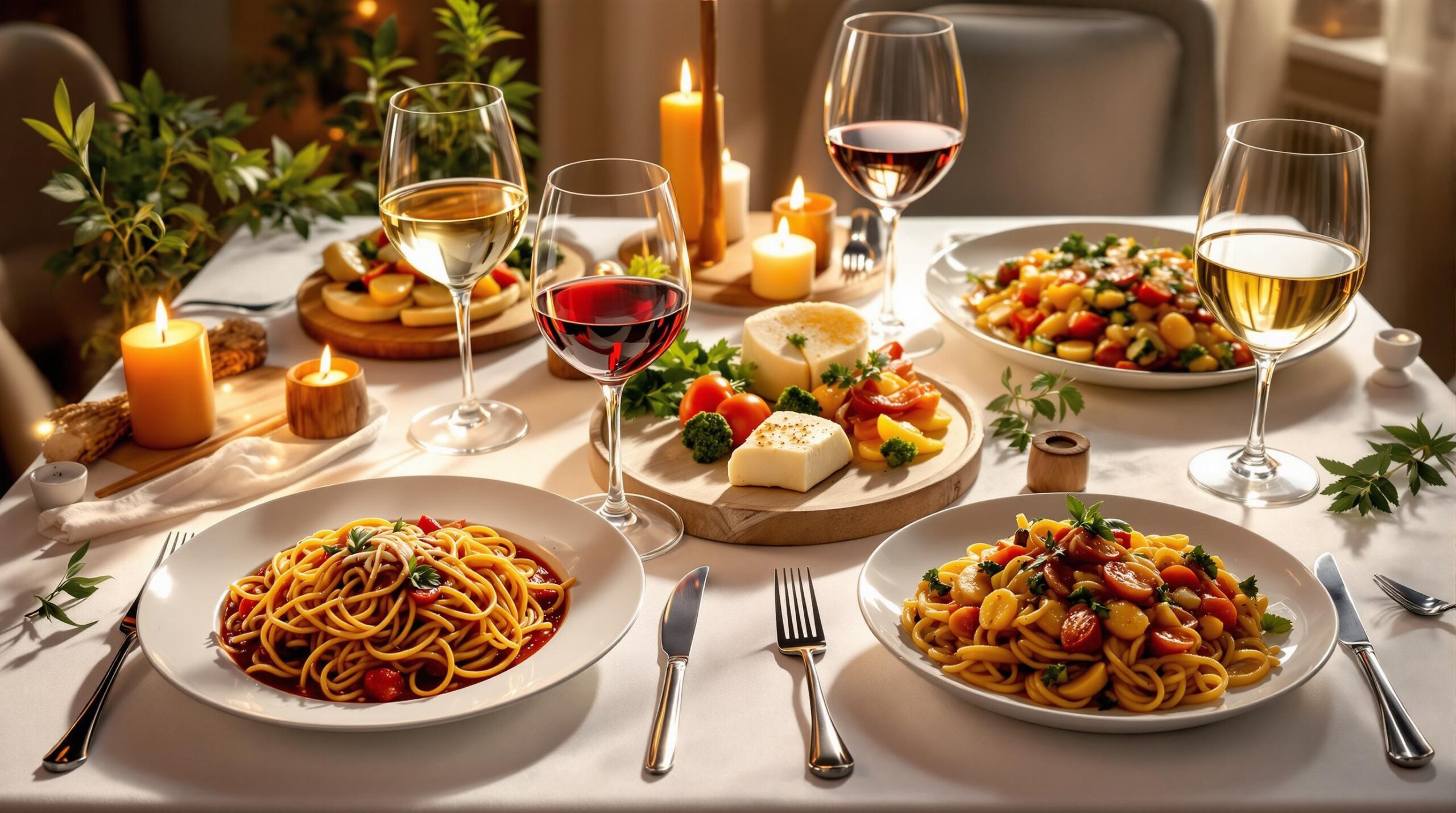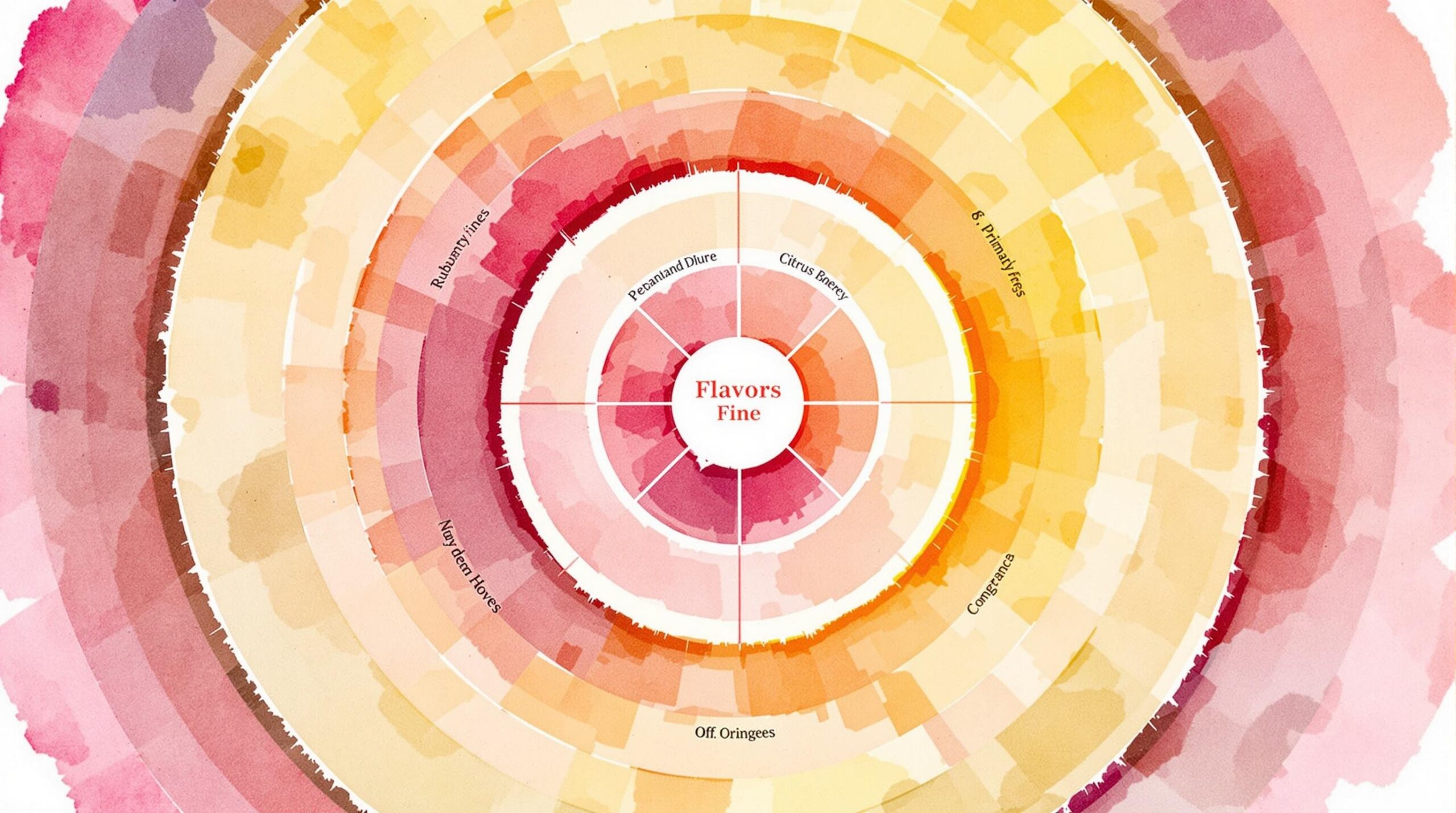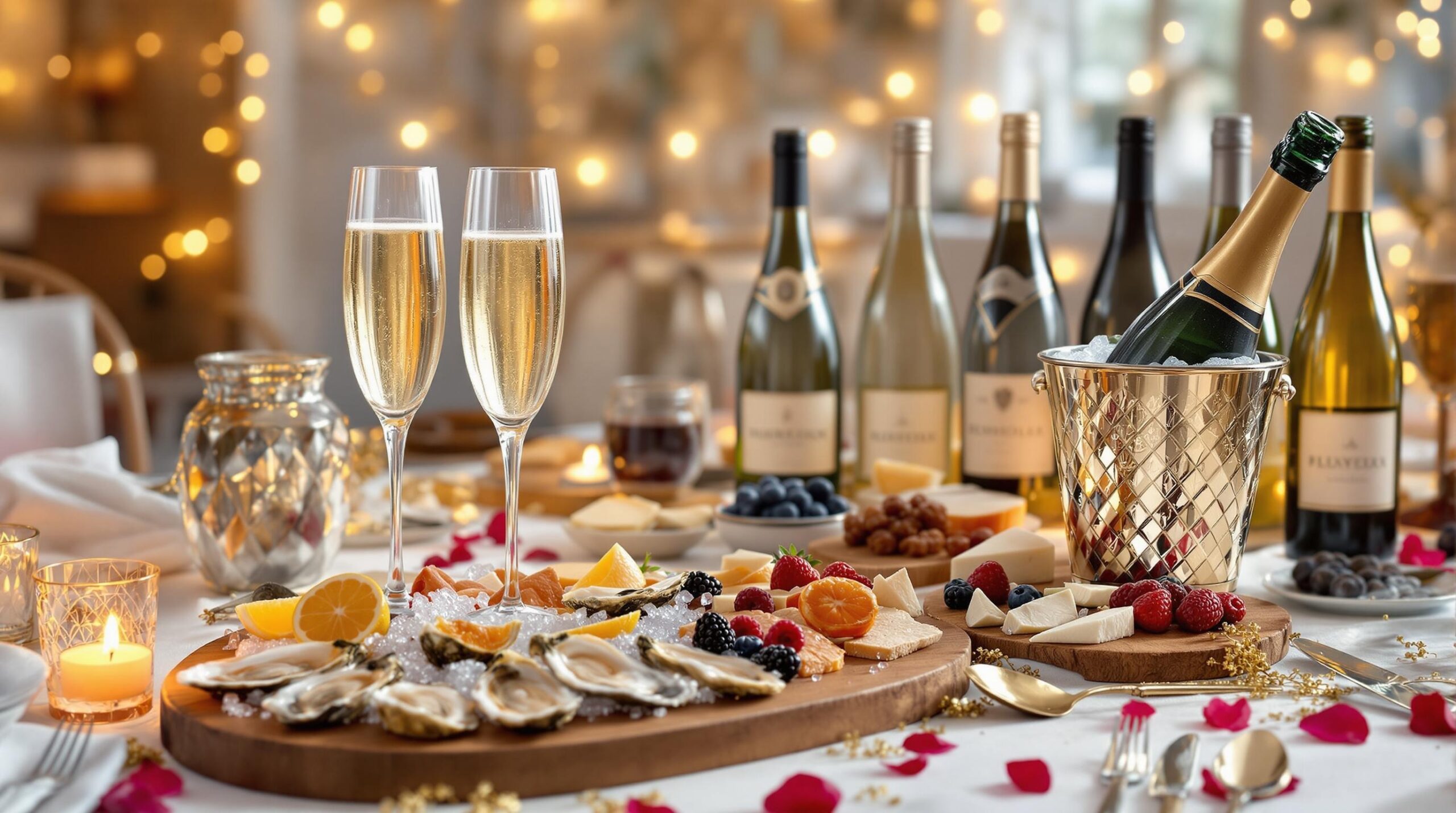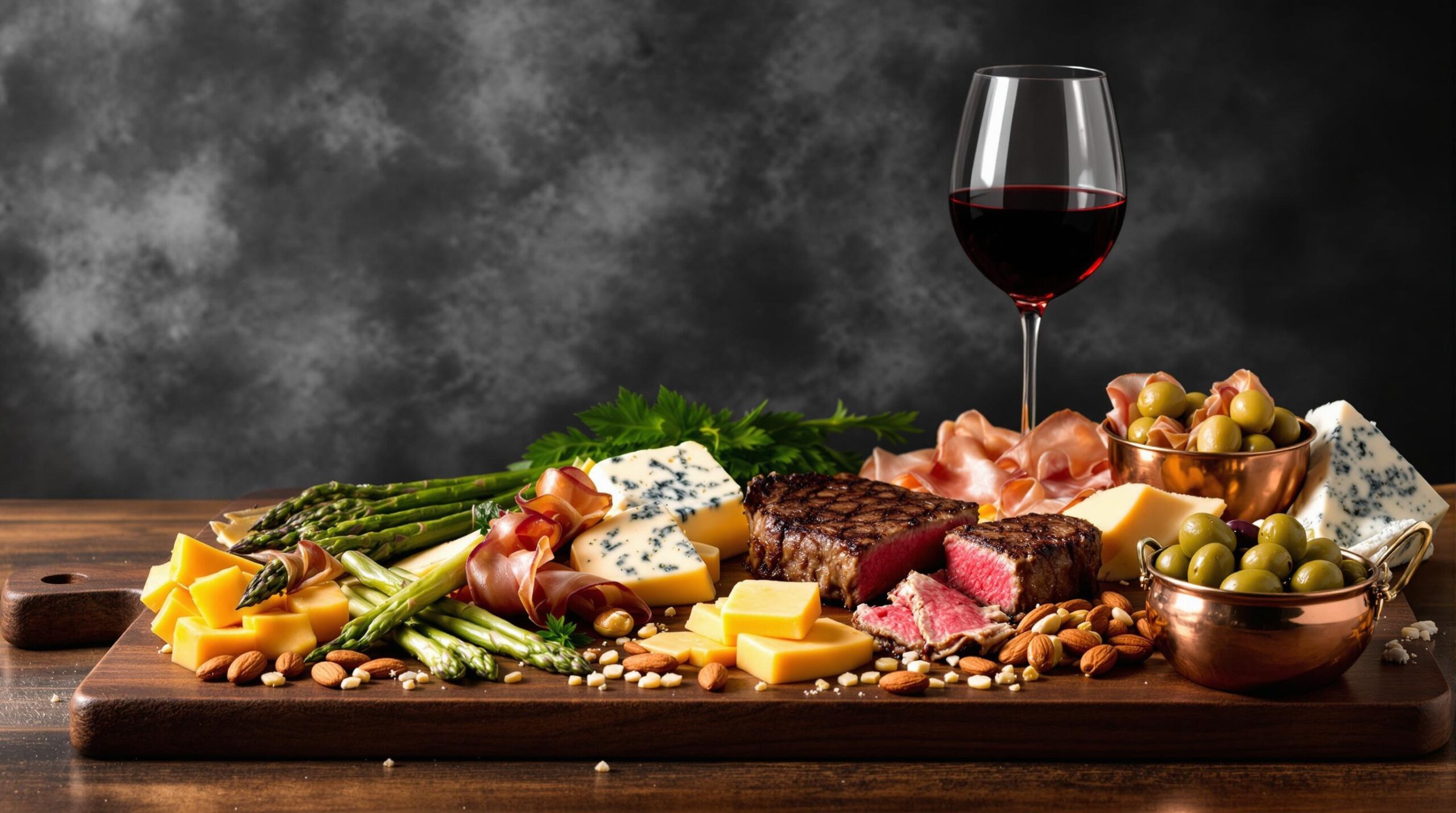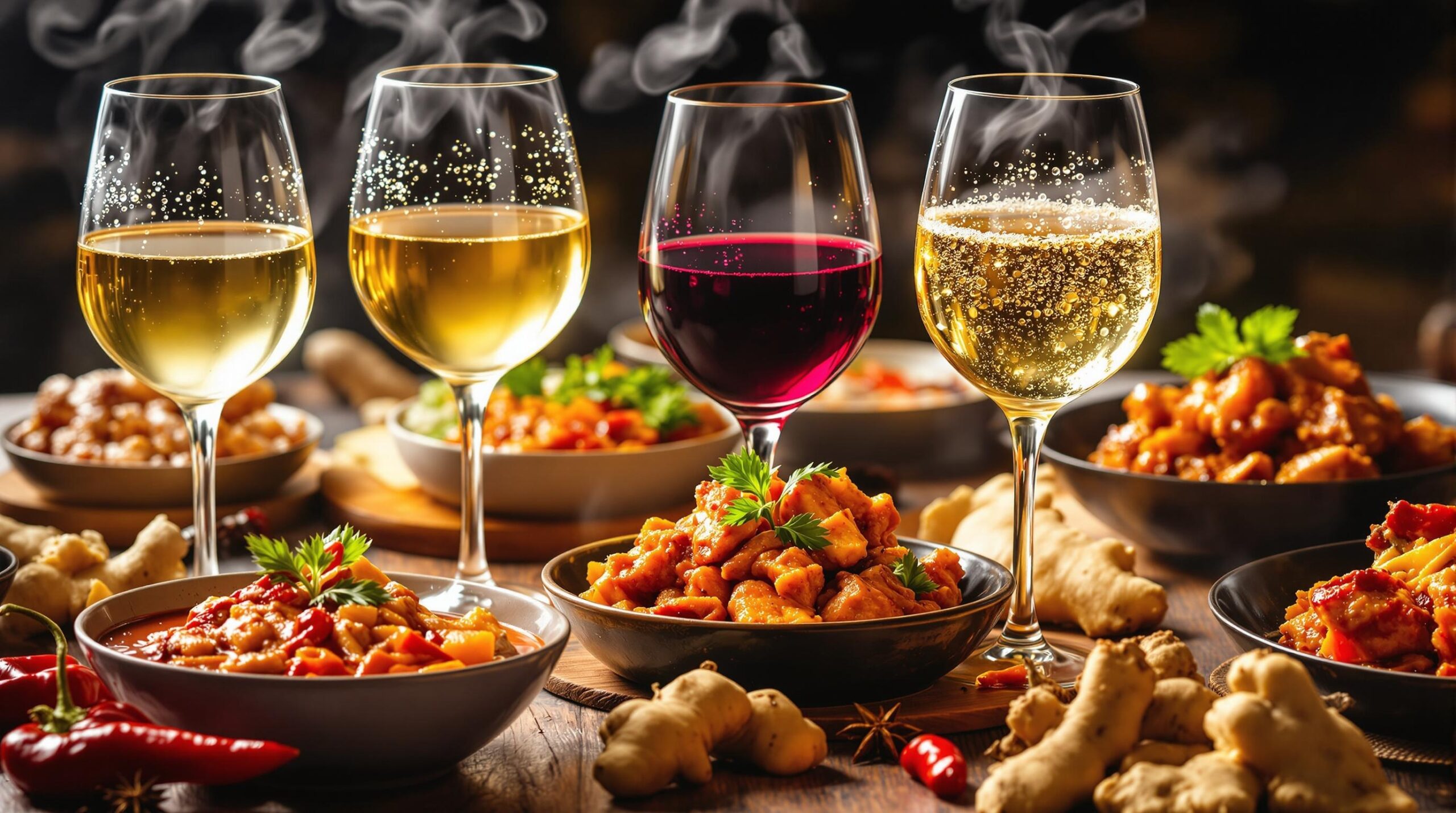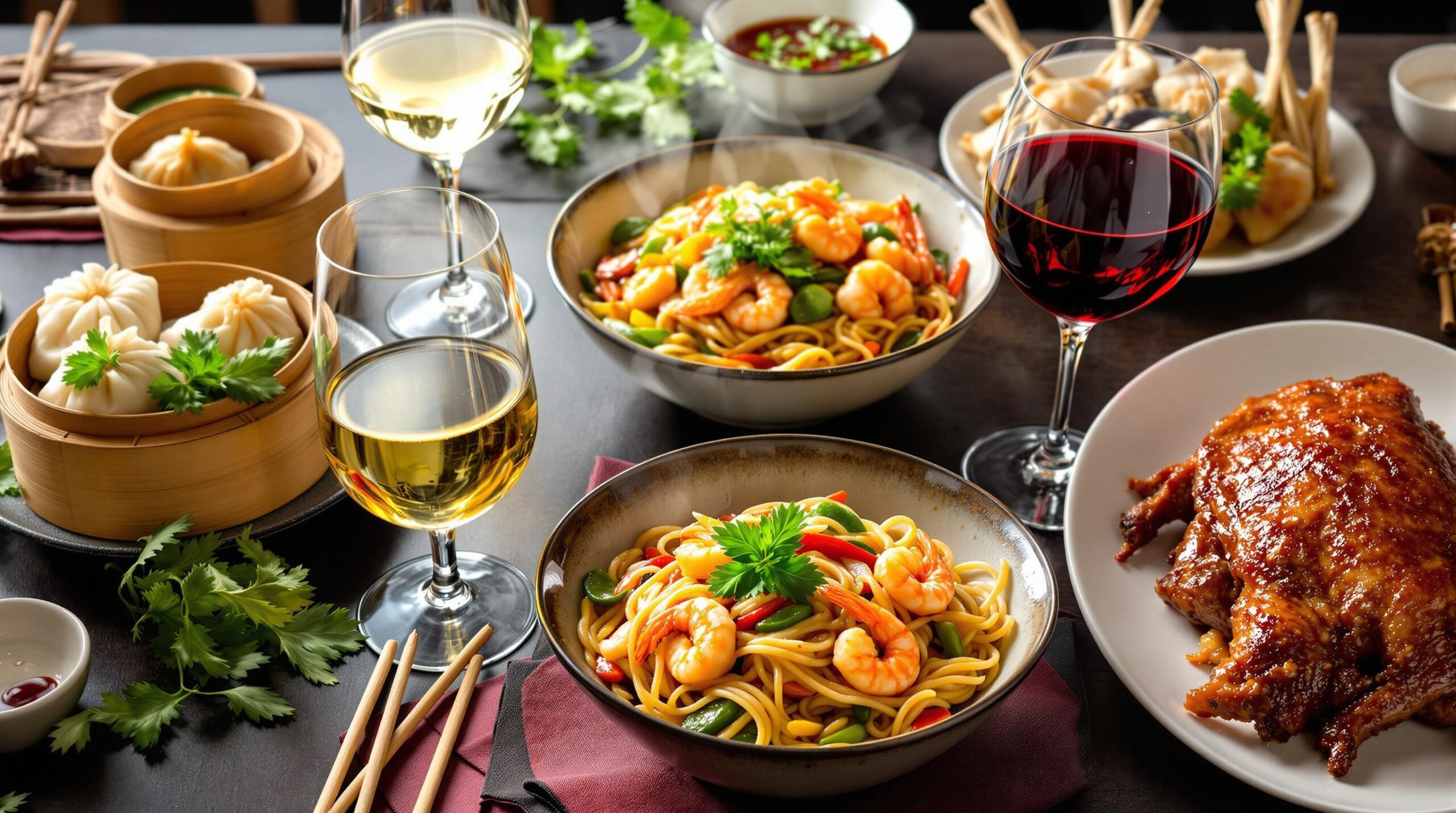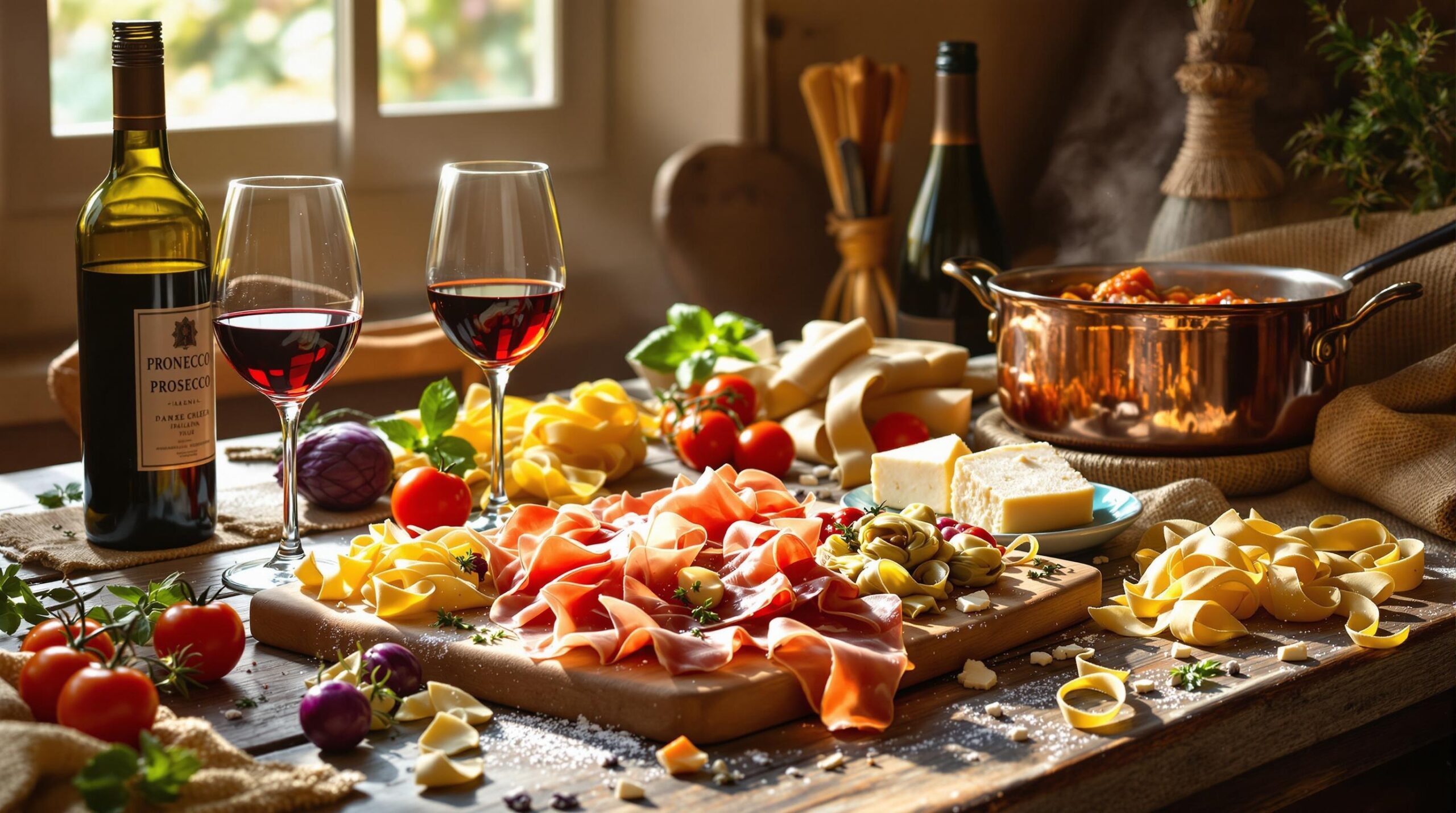White wines offer refreshing diversity, from crisp Sauvignon Blancs to rich Chardonnays. Understanding basic white wine characteristics helps you pick bottles you’ll love and create perfect food pairings.
Essential White Wine Varieties & Their Profiles
- Chardonnay: Full-bodied with apple, pear and vanilla notes. Oaked versions show buttery, toasty flavors
- Sauvignon Blanc: Light, zesty with citrus and herbaceous notes
- Pinot Grigio/Gris: Light to medium-bodied with subtle citrus and stone fruit
- Riesling: Ranges from bone dry to sweet, with characteristic peach and mineral notes
Quick Style Guide
| Wine Type | Body | Sweetness | Primary Flavors |
|---|---|---|---|
| Chardonnay | Full | Dry | Apple, Vanilla |
| Sauvignon Blanc | Light | Dry | Citrus, Herbs |
Food Pairing Fundamentals
Match wine intensity with food intensity. Light wines pair well with delicate dishes, while fuller-bodied whites complement richer foods.
- Light whites: Seafood, salads, light pasta
- Medium whites: Poultry, creamy pasta, soft cheeses
- Full-bodied whites: Rich fish dishes, cream sauces, roasted vegetables
Serving Temperature and Storage Tips
Serve most white wines between 45-55°F (7-13°C). Store bottles horizontally in a cool, dark place.
Temperature Guide
- Light whites: 45-48°F
- Full-bodied whites: 50-55°F
- Sweet whites: 43-45°F
Avoid common storage mistakes:
- Keep away from direct sunlight
- Avoid temperature fluctuations
- Don’t store near cooking areas
How to Choose Quality White Wines
Quality white wines reveal their character through appearance, aroma, and taste. Learn to identify key indicators before purchasing.
Quality Indicators
- Clear, bright appearance without cloudiness
- Intense, clean aromas without off-putting smells
- Balance between acidity, alcohol, and flavor components
- Appropriate price point for the region and variety
Common White Wine Regions
Each region produces distinctive styles shaped by climate, soil, and winemaking traditions.
| Region | Known For | Notable Wines |
|---|---|---|
| Burgundy, France | Chardonnay | Chablis, Meursault |
| Loire Valley, France | Sauvignon Blanc | Sancerre, Pouilly-Fumé |
| Mosel, Germany | Riesling | Kabinett, Spätlese |
Budget-Friendly White Wine Options
Find excellent value without compromising quality by exploring lesser-known regions and varieties.
Value Picks by Region
- Spain: Albariño from Rías Baixas
- Portugal: Vinho Verde
- South Africa: Chenin Blanc
- Chile: Sauvignon Blanc from Casablanca Valley
Shopping Tips
- Shop at wine specialty stores for better value
- Look for recent vintages in light whites
- Sign up for store newsletters to catch sales
- Buy by the case for additional discounts
Exploring White Wines: Next Steps
Develop your palate through thoughtful tasting and experimentation.
Tasting Strategies
- Start a wine tasting journal
- Join local wine tasting groups
- Compare similar varieties from different regions
- Try blind tastings to remove label bias
Resources for Learning
- Local wine courses and workshops
- Wine apps for tracking preferences
- Regional wine guides
- Virtual tastings with wine professionals
Quick Guide to White Wines: FAQs and Pairings
Common Questions About White Wines
What’s the ideal serving temperature for white wine?
Most white wines taste best between 45-50°F (7-10°C). Light whites like Pinot Grigio should be served cooler, while fuller-bodied whites like Chardonnay can be slightly warmer.
How long does white wine last after opening?
When stored properly in the refrigerator with a wine stopper, most white wines stay fresh for 3-5 days. Use a vacuum sealer for best results.
Which white wines are best for cooking?
Choose dry whites like Sauvignon Blanc or unoaked Chardonnay. Avoid sweet wines unless specified in the recipe. Quality matters – use wines you’d enjoy drinking.
What are the main types of white wine?
- Chardonnay: Full-bodied, often with buttery notes
- Sauvignon Blanc: Crisp, herbaceous
- Pinot Grigio: Light, refreshing
- Riesling: Can range from dry to sweet
- Moscato: Sweet, light-bodied
Which foods pair well with white wines?
| Wine Type | Food Pairings |
|---|---|
| Chardonnay | Roasted chicken, cream sauces, salmon |
| Sauvignon Blanc | Goat cheese, asparagus, seafood |
| Pinot Grigio | Light pasta, salads, shellfish |
How should I store white wine?
Store bottles horizontally in a cool, dark place around 55°F (13°C). Keep away from direct sunlight and temperature fluctuations.
What causes white wine to turn brown?
Exposure to oxygen and heat can cause browning. Store properly and consume within the recommended timeframe to prevent oxidation.
Can white wine be aged?
Some white wines, particularly high-quality Chardonnays and Rieslings, can age well for 5-10 years. Most whites are best enjoyed young, within 1-2 years of release.
What glasses should I use for white wine?
Use glasses with smaller bowls than red wine glasses. This helps maintain cooler temperatures and concentrate delicate aromas.
How can I tell if white wine has gone bad?
Look for changes in color (browning), off-putting smells (vinegar-like), or fizzy texture in still wines. Trust your senses – if it doesn’t smell or taste right, don’t drink it.
Tips for Enjoying White Wine
- Let wine breathe for 10-15 minutes after opening
- Hold glasses by the stem to maintain proper temperature
- Start with lighter whites before moving to fuller-bodied ones
- Keep a variety on hand for different occasions and pairings
Buying White Wine
Look for recent vintages when buying everyday whites. Consider starting with wines from well-known regions like New Zealand Sauvignon Blanc or Italian Pinot Grigio. Buy from reputable sellers who store wine properly.
Remember that wine preferences are personal. Experiment with different varieties and regions to find your favorites. Start with small bottles or try wines by the glass at restaurants to explore without commitment.

